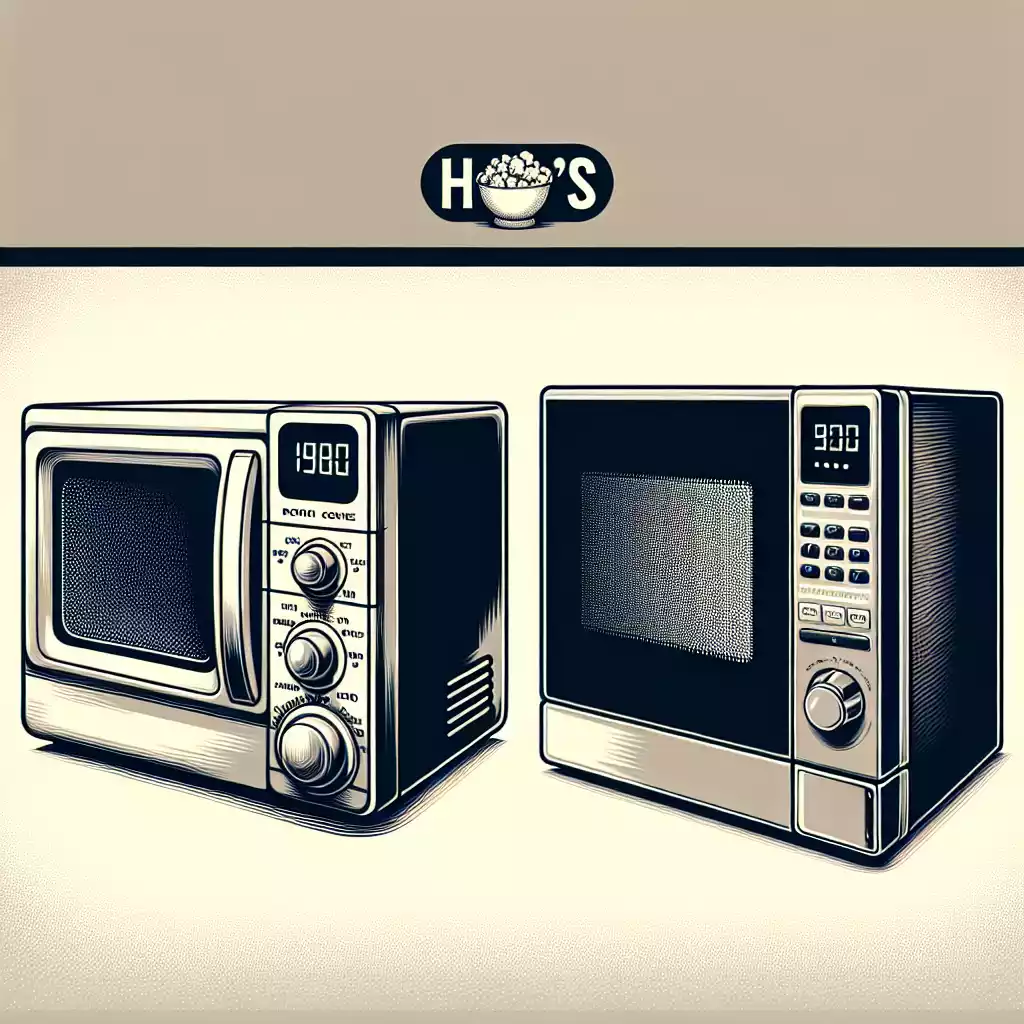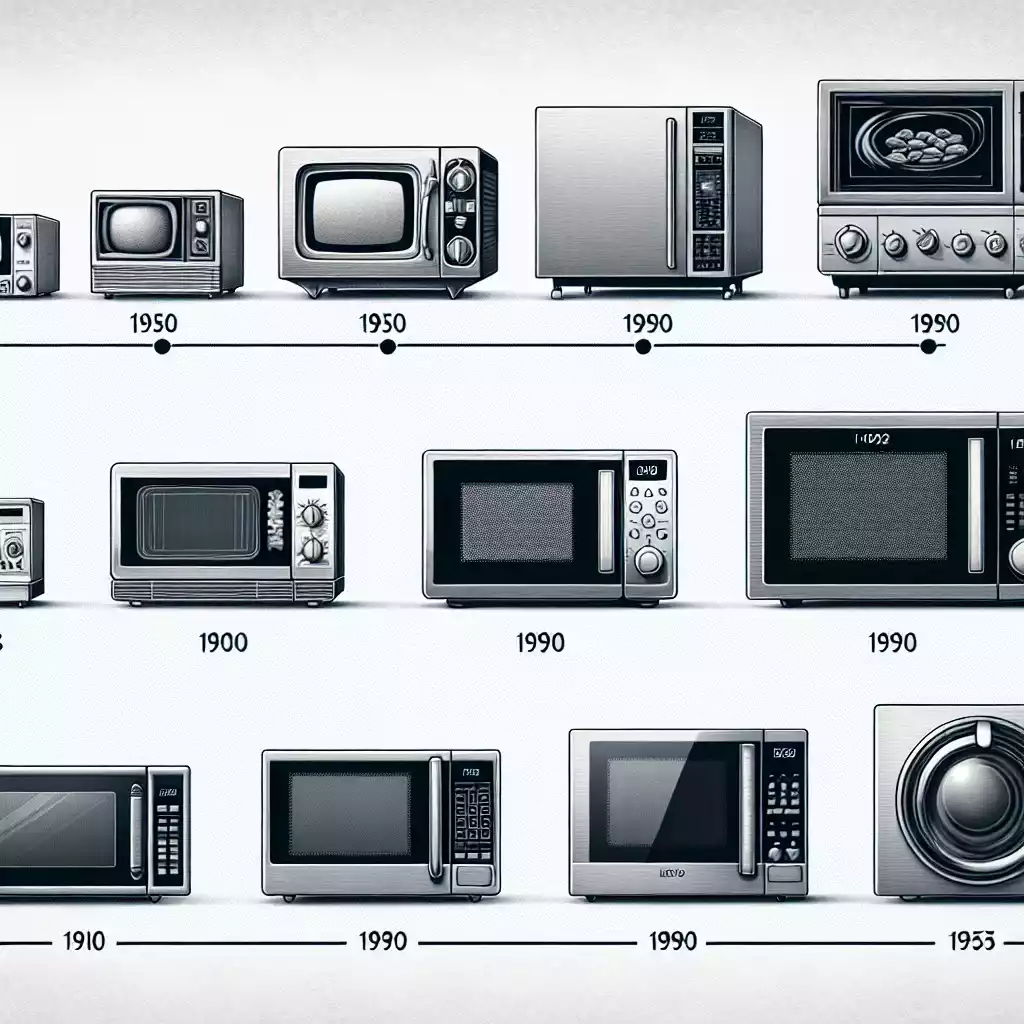Microwaves have come a long way since their inception. Remember the days when they were bulky, noisy, and not very efficient? Today, they are sleek, smart, and incredibly versatile. The journey of the microwave oven from a luxury appliance to an everyday kitchen staple is fascinating.
Microwave ovens were first introduced to the public in the late 1940s by Percy Spencer, an engineer at Raytheon. He discovered that microwaves could cook food when he noticed a candy bar melting in his pocket while working with radar technology. This accidental discovery led to the development of the first commercial microwave oven, which was large, expensive, and primarily used in restaurants. Over the decades, technological advancements have made microwaves more affordable, efficient, and user-friendly.
Modern microwaves now come with a plethora of features that were unimaginable a few decades ago. From smart technology integration to enhanced cooking capabilities, the improvements are significant. But how exactly have these changes impacted our daily lives and cooking habits? Let’s explore the evolution, features, efficiency, and future trends of microwaves in detail.
The Evolution of Microwaves
Early Innovations and Inception
The invention of the microwave oven dates back to the 1940s. Percy Spencer’s accidental discovery of microwave cooking led to the creation of the first commercial microwave, known as the “Radarange.” These early models were massive, standing over six feet tall and weighing around 750 pounds. They were primarily used in commercial kitchens due to their size and cost.
Technological Milestones Over the Decades
Over the years, microwaves have undergone significant changes. The 1960s and 1970s saw the introduction of more compact and affordable models, making them accessible to households. By the 1980s, microwaves had become a common kitchen appliance, with features like turntables and preset cooking functions.
Modern Microwave Features
Smart Technology Integration
Today’s microwaves are smarter than ever. Many models come with Wi-Fi connectivity, allowing users to control them via smartphone apps. Voice commands through virtual assistants like Alexa and Google Assistant have also become common, making cooking more convenient.
Enhanced Cooking Capabilities
Modern microwaves boast advanced cooking technologies such as sensor cooking, which automatically adjusts cooking time and power levels based on the food’s moisture content. Inverter technology ensures even heating, preventing overcooked edges and cold centers.
Efficiency and Performance

Energy Consumption Improvements
Energy efficiency has been a significant focus in the development of modern microwaves. Newer models consume less power while delivering better performance. Energy-saving features, such as eco modes and efficient heating elements, help reduce electricity bills.
Cooking Speed and Uniformity
Advances in microwave technology have significantly improved cooking speed. Modern microwaves can cook food faster and more uniformly than older models. Features like inverter technology and sensor cooking contribute to these improvements.
User Experience and Safety
User-Friendly Interfaces
Modern microwaves feature intuitive interfaces with touchscreen controls and preset cooking functions. These user-friendly designs make it easier to cook a variety of dishes with minimal effort. Additionally, many models come with easy-to-clean surfaces and removable turntables.
Safety Enhancements
Safety has also been a priority in the evolution of microwaves. Modern models include features like child locks, improved shielding to prevent radiation leakage, and automatic shut-off mechanisms to prevent overheating.
Versatility in Cooking
Multi-Functionality
Today’s microwaves are not just for reheating leftovers. Many models come with combination cooking options, including grilling and convection cooking. This multi-functionality allows users to bake, roast, and grill, making the microwave a versatile kitchen appliance.
Specialized Cooking Modes
Modern microwaves offer specialized cooking modes for different types of food. These modes include defrost, reheat, and specific settings for popcorn, pizza, and vegetables. Some models even have healthy cooking options that use steam to prepare nutritious meals.
Design and Aesthetics
Space-Saving Designs
Microwave designs have evolved to fit various kitchen layouts. Compact models are available for small kitchens, while over-the-range and built-in options help save counter space. These space-saving designs make it easier to incorporate microwaves into any kitchen.
Aesthetic Enhancements
Modern microwaves come in a variety of finishes and styles, from stainless steel to retro designs. Some models offer customizable options to match the kitchen decor, making them not just functional but also a stylish addition to the kitchen.
Cost and Value for Money
Price Range and Affordability
Microwaves are available in a wide range of prices, from budget-friendly models to high-end options with advanced features. This variety allows consumers to choose a microwave that fits their budget and meets their needs.
Long-Term Value
Investing in a modern microwave can provide long-term value. These appliances are designed to be durable and have longer lifespans compared to older models. Customer reviews and satisfaction ratings often highlight the reliability and performance of modern microwaves.
Environmental Impact
Eco-Friendly Features
Many modern microwaves are designed with eco-friendly features. These include energy-efficient models that consume less power and use environmentally safe materials. Some manufacturers also focus on sustainable production processes.
Recycling and Disposal
Proper disposal and recycling of old microwaves are essential to minimize environmental impact. Many manufacturers offer recycling programs and incentives for consumers to dispose of their old appliances responsibly.
Common Mistakes to Avoid
Misuse and Overloading
One common mistake is overloading the microwave, which can lead to uneven cooking and potential damage. It’s essential to follow the manufacturer’s guidelines on the maximum load and use appropriate containers.
Maintenance and Care
Regular maintenance is crucial to extend the lifespan of a microwave. This includes cleaning the interior and exterior, checking for any signs of damage, and ensuring the turntable and door seals are in good condition.
Future Trends in Microwave Technology
Upcoming Innovations
The future of microwave technology looks promising, with ongoing research and development. Innovations such as advanced sensor technologies, integration with other smart home devices, and improved energy efficiency are expected.
Consumer Expectations
As consumer preferences evolve, manufacturers are focusing on meeting the demand for more versatile, efficient, and user-friendly microwaves. Trends indicate a growing interest in appliances that offer multiple cooking functions and smart features.
Relevant Data Tables
Comparison of Features: Old vs. Modern Microwaves
| Feature | Old Models | Modern Models |
|---|---|---|
| Energy Efficiency | Low | High |
| Cooking Speed | Slow | Fast |
| Uniform Heating | Poor | Excellent |
| Smart Features | None | Advanced |
Price Range and Features
| Price Range | Features |
|---|---|
| Under $100 | Basic cooking functions, compact size |
| $100 – $300 | Preset cooking functions, better energy efficiency |
| $300 – $600 | Smart features, advanced cooking technologies |
| Above $600 | Multi-functionality, high-end design, top-notch performance |
FAQs
FAQ 1: How have microwaves changed in terms of energy consumption?
Modern microwaves are more energy-efficient, incorporating features that reduce power usage without compromising performance. This helps in lowering electricity bills and reducing environmental impact.
FAQ 2: What are some common mistakes to avoid when using a microwave?
Avoid overloading the microwave, using inappropriate containers, and neglecting regular maintenance. Following the manufacturer’s guidelines can prevent damage and ensure optimal performance.
FAQ 3: Are modern microwaves safer than older models?
Yes, modern microwaves have enhanced safety features such as improved shielding, child locks, and better heat management. These features make them safer to use compared to older models.
FAQ 4: Can microwaves be integrated with smart home systems?
Many modern microwaves come with Wi-Fi connectivity and can be integrated with smart home systems for remote control and automation. This integration allows for more convenient and efficient cooking.
FAQ 5: What future trends can we expect in microwave technology?
Future trends may include more advanced smart features, improved energy efficiency, and greater integration with other kitchen appliances. Innovations in sensor technology and user interfaces are also expected.
Conclusion
Microwaves have seen significant improvements in technology, design, and functionality over the years. From energy efficiency to smart features, the modern microwave offers a range of benefits that enhance user experience and cooking efficiency. As technology continues to advance, we can expect even more innovative features and improvements in the future.

